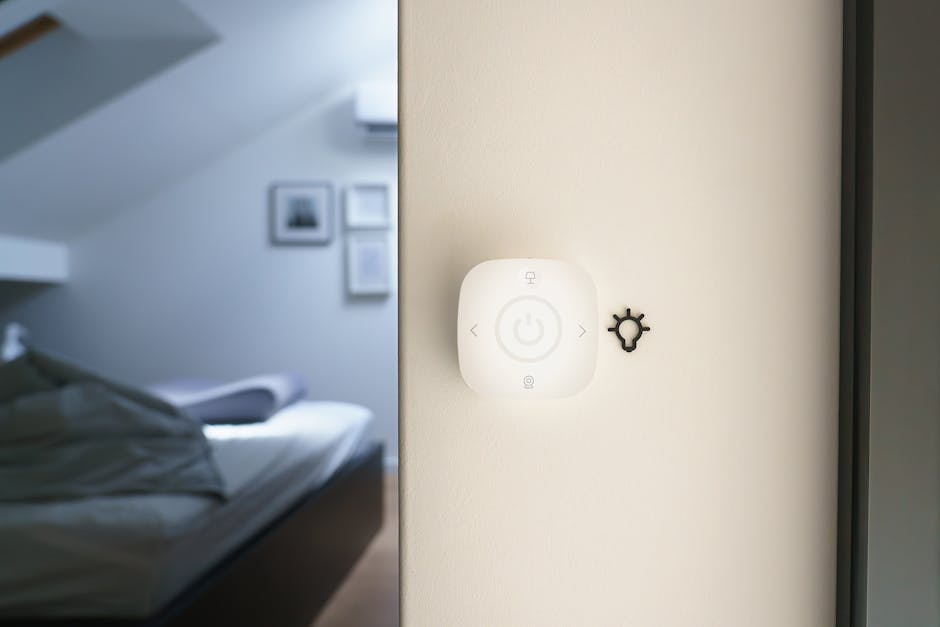It’s 2025, and seriously, look around you. Everyone’s glued to their phone, right? Swiping, tapping, doing… well, just about everything on an app. From figuring out what’s for dinner to checking the weather or even managing your money, there’s a little icon for it. It really makes you wonder, who actually makes these things? Who is behind all these digital tools that sort of run our daily lives now? That’s where mobile app developers come in, and what they do is, it’s pretty involved stuff, more than just typing code onto a screen.
They’re the people that design, build, and keep all those phone programs going, like, year-round. It is not just about writing lines of code, though that is a big part of it, for sure. It’s also about solving problems for users and making digital experiences happen. If you’ve ever used an app and thought, “wow, that was easy,” or “this thing just gets me,” a developer likely had a hand in making it feel that way.
The job, generally speaking, can seem a bit mysterious from the outside, you know. Like, what do they even do all day? Do they just sit there, staring at screens, drinking coffee, making little apps pop into existence? Not quite, no. It is a varied sort of role, normally, that needs a mix of creative thinking and really technical know-how. And the mobile app world, it keeps changing, always.
So, in the year 2025, with tech always moving, it’s good to get a handle on what a mobile app developer’s day might look like. What are their main tasks? What skills do they actually use? This whole area is a big deal for businesses and everyday people. Knowing what these tech workers are up to can help everyone appreciate the tech more.
What Does a Mobile App Developer Really Get Up To?
Okay, so let’s get into the nitty-gritty. A mobile app developer, they do quite a bit. At its basic core, their main goal is making apps that work well and are also useful for people who will use them. This means thinking about everything from how the app looks on your screen to how it handles a lot of user information, or connects to the internet, or uses your phone’s camera.
First off, they often start with an idea. Someone, maybe a business person or a client, comes up with a need for an app. The developer, or sometimes a whole team of them, then figures out how to actually make that idea real on a mobile device. This often means lots of talking and planning sessions before any coding even starts, to make sure everyone is on the same page.
They spend a fair amount of time, you could say, planning out how the app will look and behave. This step is sometimes called user interface (UI) and user experience (UX) design, even if they aren’t dedicated designers. It’s important because if an app is hard to use, people generally won’t stick with it for very long, no matter how clever the actual technology is.
Then, there’s the actual writing of the code. This is what many people think of when they imagine an app developer. They write instructions in specific programming languages, like Swift for Apple phones or Kotlin for Android ones. These instructions tell the phone exactly what to do when you tap, swipe, or even shake your device around a bit.
They also, normally, have to make sure the app can talk to other systems. For example, if your app needs to pull up weather info, it has to connect to a weather service. This connecting part is a big job. It’s often called working with APIs, which are basically like digital messengers that let different software bits talk to each other without too much fuss.
Building Blocks: Different Kinds of Mobile App Developers
You know, not all mobile app developers are, like, the same. There are different paths they take, which usually depend on what kind of phone they’re building for. It’s not just one big group doing everything. The mobile phone world is split mainly into two big operating systems, as you likely know, Apple’s iOS and Google’s Android.
So, you have iOS developers. These folks focus on making apps for iPhones and iPads. They usually work with programming languages like Swift or Objective-C. Making apps for Apple products often means following pretty strict design rules Apple has set, which helps keep things looking consistent across all their devices for users.
Then, there are the Android developers. They build apps for a whole bunch of different phones and tablets that run Google’s Android system. This includes devices from Samsung, Google’s own Pixel phones, and many others. Their common languages include Kotlin or Java. Android developers often have to deal with more variety in screen sizes and hardware types.
But wait, there’s another group too. These are called cross-platform developers. Instead of picking just iOS or Android, they use tools that let them write code once, and then that code can run on both kinds of phones. Tools like React Native or Flutter are popular for this. It can sometimes save time and effort, especially for companies that need apps on all devices.
This cross-platform approach is getting really popular, it seems, in 2025, because companies want their apps to reach as many people as possible, fast. For example, a business looking for Mobile app development Houston might choose a cross-platform team to cover both Apple and Android users without needing two separate teams. It’s considered to be a pretty smart move for many businesses.
The Whole App Journey: From Idea to Your Phone
Building an app is not just a quick sprint; it’s more like a marathon, with lots of different stages that a developer or team will typically go through. It begins way before you ever even see an app pop up in your app store. The journey starts with an idea, naturally, and lots of thinking about what users need and want from the digital product.
First, there’s this discovery phase. Here, they talk to clients, figure out what the app should do, who it’s for, and what problems it should solve. This step is super important, as it lays down the basic groundwork for everything else that will follow. Getting this bit right really helps later on, no doubt about it.
After that, they usually move into planning and design. This is where wireframes and mockups are made, showing how the app will look and how users will move through it. It involves making a lot of decisions about colors, buttons, and layouts. The goal here is to make sure the app is both good looking and easy for people to pick up and use.
Then comes the actual building, which, yes, means writing code. Developers sit down and translate all those plans and designs into functioning software. This part of the process can take a long time, often many months, depending on how complicated the app needs to be. It’s a very hands-on period for the whole development team involved.
Once the app is mostly built, it doesn’t just go live right away. Oh no. There’s a crucial step called testing. Developers and dedicated testers try to break the app in every way possible, finding bugs, errors, or things that just don’t work right. They want to catch all the little hiccups before the app reaches real users, generally speaking.
Finally, after all the bugs are squashed and everything seems to be working smoothly, the app gets launched. This means submitting it to the Apple App Store or Google Play Store. But even after launch, the work isn’t totally finished; apps usually need updates and improvements over time, which brings us to the next point about the role.
Keeping Apps Running: Maintenance and Updates
Launching an app isn’t the end of a developer’s responsibilities; in fact, it often marks the start of an ongoing relationship with the app and its users. The digital world is always shifting, and apps need to keep up to remain useful and secure. This is where maintenance and updates come into play for a mobile app developer.
First, there’s fixing bugs. No app is perfect, and sometimes, after launch, users find issues that weren’t caught during testing. A developer will then need to investigate these problems and release updates that patch them up. It’s just part of the deal, really, with any kind of software out in the wild now.
Then, operating systems change, like when Apple or Google release new versions of iOS or Android. These updates often mean developers have to adjust their apps to make sure they still work properly and can use any new phone features. Ignoring these changes can make an app become old or even unusable for people.
Security is also a huge thing. New security threats pop up all the time, and developers have to keep an eye on them. They regularly update app code and systems to guard against potential data breaches or other kinds of digital attacks. Keeping user information safe is, without doubt, a big part of their job.
Adding new features is also a common task. As user needs change or technology progresses, apps often need to grow and offer more. Developers will then design and build these new additions, which might be anything from a new filter for photos to a whole new way of interacting with the app, which is neat.
So, a mobile app developer doesn’t just build something once and then walk away. They are typically involved in a continuous cycle of improving, securing, and adapting the app to an ever-changing digital environment. It is a commitment, for sure, making sure the app stays relevant and useful for its entire lifespan.
What Sort of Skills Do Mobile App Developers Need?
Being a mobile app developer takes more than just being good with computers, you know. It’s a mix of really technical abilities and some other less obvious, but still super important, skills. If someone wants to get into this field, they really need to think about developing a pretty broad set of capabilities to generally succeed.
Obviously, coding is at the top of the list. They need to be really good at one or more programming languages, like Swift, Kotlin, Java, or JavaScript for cross-platform tools. Being able to write clean, efficient code that does what it’s supposed to is, naturally, very important for their daily work.
Problem-solving skills are also super high up there. Apps often have unexpected issues, or there are tricky technical challenges to get through. Developers need to be able to logically break down problems and then figure out good solutions, sometimes under a bit of pressure, you could say. It is, generally, a constant thing they do.
Design thinking is another one. Even if they aren’t dedicated graphic designers, developers need to understand how users interact with apps and what makes a good user experience. They have to think about layouts, navigation, and making the app feel intuitive. It often involves a lot of empathy for the people using their creations.
Communication skills, surprisingly maybe, are also quite key. Developers often work in teams, or with clients, or with designers. Being able to explain technical stuff in a way that non-technical people can understand is a really helpful talent to have, and it can stop lots of misunderstandings from happening during a project.
Finally, and this might be one of the most important ones for 2025, is the ability to keep learning. Technology moves incredibly fast. What’s popular today might be old news tomorrow. Developers have to constantly update their skills, learn new languages, and stay current with the latest tools and trends. It’s just how the tech world works, always changing.
In short, a mobile app developer’s job is definitely not a static thing. It involves a whole range of activities, from the initial brainstorming to the long-term care of an app, all while trying to make things user-friendly and secure. It’s a job that needs a blend of technical talent, creative thinking, and a willingness to constantly learn and adapt. The future of our mobile devices really rests in their hands, after all.
FAQ: What Does a Mobile App Developer Do?
Q1: So, what’s the main thing a mobile app developer does?
A mobile app developer primarily designs, codes, and maintains software applications for mobile devices like smartphones and tablets. They work to bring app ideas to life, ensuring the apps are functional, user-friendly, and perform well for the people using them on their everyday phones.
Q2: Is there a difference between an iOS and an Android developer?
Yes, there is. An iOS developer builds apps specifically for Apple devices (like iPhones and iPads), using languages such as Swift. An Android developer, on the other hand, makes apps for devices running Google’s Android operating system, usually working with Kotlin or Java programming languages.
Q3: Do mobile app developers just write code all day?
While writing code is a big part of their role, it’s not the only thing. They also spend time planning app features, designing the user experience, testing for bugs, making sure the app is secure, and later, updating the app to add new features or adjust to new operating system versions. It is a pretty varied job, honestly.
Q4: What are some important skills a mobile app developer needs?
Beyond coding, key skills include strong problem-solving abilities to fix technical challenges, good design thinking to make apps user-friendly, and effective communication to work with teams and clients. Also, staying curious and continuously learning new technologies is very important because the field changes quickly.
Q5: What happens after a mobile app is launched in the store?
After an app is launched, a mobile app developer’s work continues with maintenance. This involves fixing any newly discovered bugs, ensuring compatibility with updated operating systems, improving security features, and often adding new functions or making general performance improvements based on user feedback.



